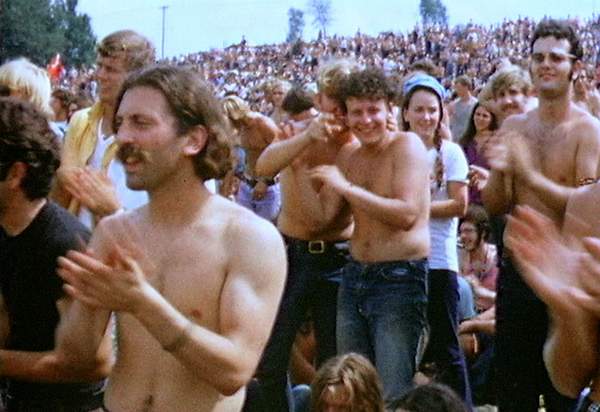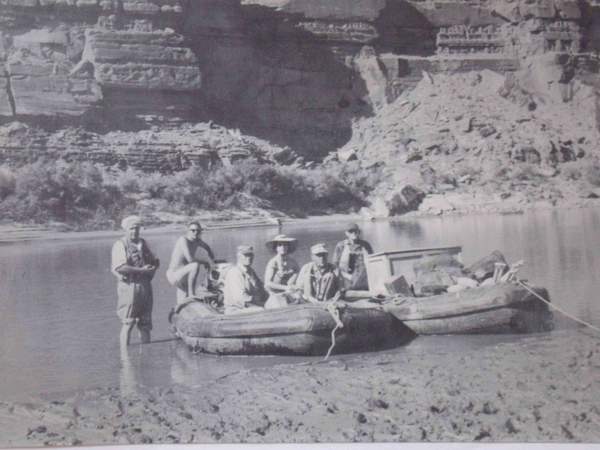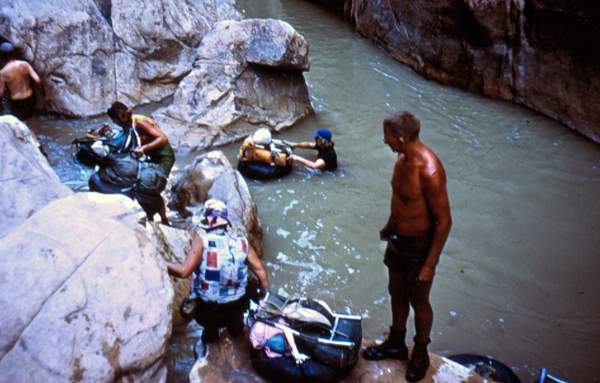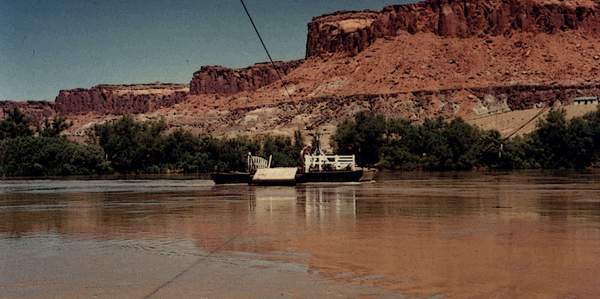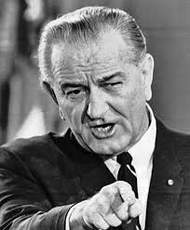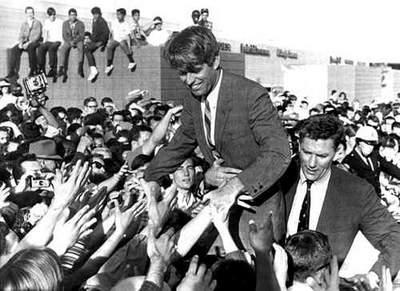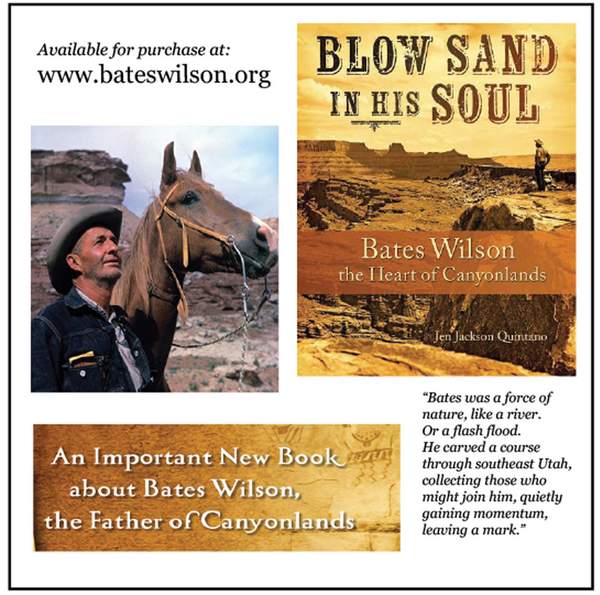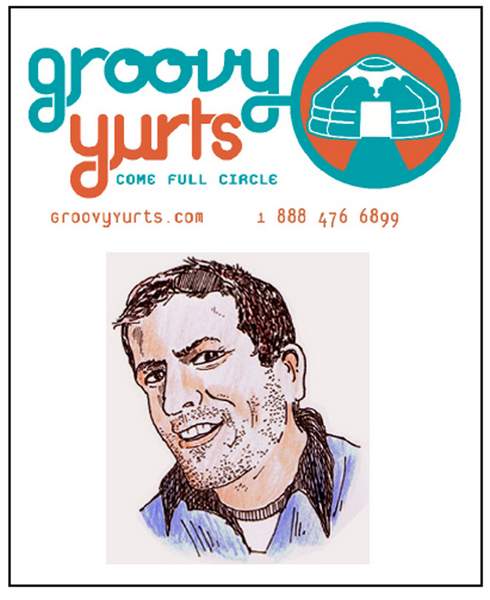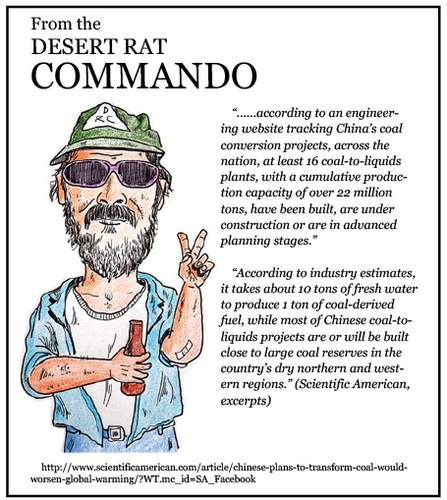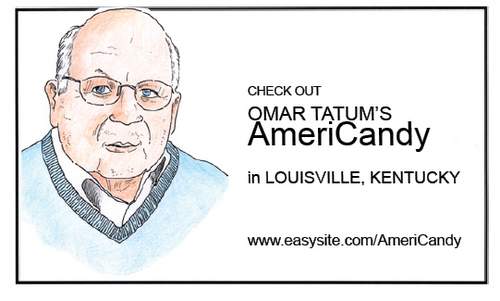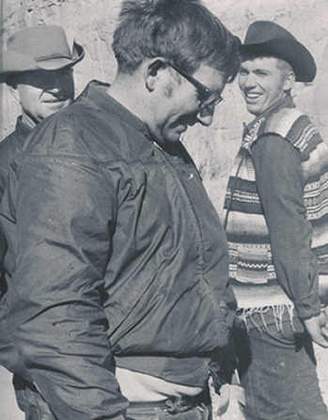 Once again I reminisce and search my memory of past years and lay down a few meandering thoughts. The eventful Sixties surely stand out in my mind. Ralph Waldo Emerson’s book Nature became the bible of his own era’s Cultural Revolution movement. At that time, Americans were more interested in the gold in California and the building of railroads and factories. Emerson didn’t much like what he saw. So he invited his generation to leave their past behind and to enjoy an original relation to the universe. “Build your own world,” he wrote. In the Leaves of Grass, Whitman urged his readers to become “undisguised and naked:”
Once again I reminisce and search my memory of past years and lay down a few meandering thoughts. The eventful Sixties surely stand out in my mind. Ralph Waldo Emerson’s book Nature became the bible of his own era’s Cultural Revolution movement. At that time, Americans were more interested in the gold in California and the building of railroads and factories. Emerson didn’t much like what he saw. So he invited his generation to leave their past behind and to enjoy an original relation to the universe. “Build your own world,” he wrote. In the Leaves of Grass, Whitman urged his readers to become “undisguised and naked:”
“Unscrew the locks from the doors! Unscrew the doors themselves from their jambs!”
And we in the Sixties took their advice. Weird bands and singing groups came from out of nowhere: The Grateful Dead, Jefferson Airplane, the Fugs, the Beatles, the Rolling Stones, and others grated on our senses. Chubby Checker’s “Twist” started a dance craze that allowed the kids to let go of their tensions and fears. Psychedelic music filled the air—with long instrumental solos and weird electronic effects. And Rock music, with its brilliant and swirling colors and hallucinogenic imagery, defined the new hippie aesthetic.
The Sixties brought us the hippies, and we wondered who the hell they were and what they wanted. The girls dressed as peasants and wore psychedelic stuff. The boys wore long hair and scroungy beards. They seemed a bit dirty, drugged, and disrespectful of us elders. The psychedelic Sixties brought us the Summer of Love flower power and love-ins, acid tests and rock-n-roll. Many dropped out of college, started up rock bands, lived in communes, and traveled to the far reaches of the planet.
It was mystifying, hilarious at times, and inexplicable. The new generation proclaimed “you can’t trust anyone over thirty!” At the beginning of Sixties, I was 31 years of age so I suppose that mantra included me too. Though a bit old for the movement, I was surely influenced by it as I equated with Thoreau, America’s famous “drop out.”
There was old Allen Ginsberg attending political and social events wearing white robes and playing Indian drums. There was Gary Snyder influencing the Beat aesthetic with his devotion to Zen Buddhism and preaching a simple Spartan lifestyle. There was Jack Kerouac and William Burroughs. Blasted out of their heads, the novel Naked Lunch soon followed.
Boutiques opened up and sold cheap and colorful clothing. Girls wore tantalizing mini-skirts, leather boots and fake eyelashes. Boys wore ugly shirts, velvet trousers, and high collared jackets and grew their hair long. They had redeeming qualities though—every festering injustice and every perceived inequality lay ripe for examination and protest.
So in this atmosphere I continued my employment—taking people down the Green and Colorado Rivers. To supplement my river-running business, I took what extra jobs I could. When not on the river, I cut pinion-pine fireplace logs for delivery to the wood-buying public. I taught school in Salt Lake City during the winter months. While teaching, I made the acquaintance of some East High School kids: Art Fenstermaker, Ron Smith, and Art Gallenson who would soon make their mark as river guides. I spent most of my time keeping the river company afloat. In the early days, I catered mostly to youth and church groups. To promote my trips I put on slide shows, gave lectures, and showed my 16mm Glen Canyon film to various groups, mostly explorer scouts.
I’d transport my guests in an open truck from Richfield to Hite and return after the river trip. We’d drive to Hanksville, stopping at Sylvia Ekker’s café for lunch, and then drive down the rough North Wash to the Colorado River and then to Hite, the historic site of the old Chaffin Ferry. The next morning we’d set off for a six-day trip.
On the trip we’d visit the famed Mormon Hole-in-the-Rock, Lake Canyon with its well-preserved Indian ruins, Hidden Passage, Music Temple, Cathedral in the Desert, Forbidding and Bridge Canyon, and top it off by climbing to the top of Rainbow Bridge. We’d leave the river at Kane Creek. Then transport out to Kanab and then back to Richfield.
But we couldn’t run the river all the time. Other things ruled the docket. Election time rolled around in November 1960. The issues centered on the missile gap, the Soviets forging ahead militarily, civil rights, and the state of the economy.
Democrat John F. Kennedy beat Republican Richard Nixon. Being a dedicated Republican, I voted for Nixon. Kennedy’s “New Frontier” team included a great choice and friend of the environment Stewart Udall as his new Secretary of Interior. He named his own brother, Robert Kennedy, as the attorney general. I was conducting trips most of the summers. The river and canyon wilderness gave me the isolation and solitude I longed for. On returning to civilization and seeing all hell breaking loose I wanted to run back to the canyons.
American aerial surveillance revealed that the Soviet Union had secretly deployed 100 nuclear warheads in Cuba raising the specter of a nuclear war. Kennedy threw a naval blockade around Cuba. After a week of tense confrontation, the Soviets capitulated and ordered their dismantling. Kennedy lifted the blockade. Those were perilous days. As a news junkie, I became quite fearful for the future, especially of nuclear weapons. France had just exploded her first atomic bomb over the Sahara and joined the exclusive “atomic club” of nations. So began a series of atmospheric nuclear tests that would continue for many years. Our President persuaded the Soviets to sign a limited test ban treaty and the U.S. ended nuclear testing in the atmosphere. We were heartened.
Cuba raising the specter of a nuclear war. Kennedy threw a naval blockade around Cuba. After a week of tense confrontation, the Soviets capitulated and ordered their dismantling. Kennedy lifted the blockade. Those were perilous days. As a news junkie, I became quite fearful for the future, especially of nuclear weapons. France had just exploded her first atomic bomb over the Sahara and joined the exclusive “atomic club” of nations. So began a series of atmospheric nuclear tests that would continue for many years. Our President persuaded the Soviets to sign a limited test ban treaty and the U.S. ended nuclear testing in the atmosphere. We were heartened.
I read a lot during those days while boating down the rivers. Henry David Thoreau was a great read. His essay Civil Disobedience describes how he went to jail rather than pay taxes to support the Mexican War and the slave system. His essay also influenced Mahatma Gandhi, Leo Tolstoy, Martin Luther King, Jr. and other civil right leaders with its defense of non-violent civil disobedience against an unjust state despite persecution and imprisonment. Mahatma Gandhi convinced me of the occasional need for non-violent civil disobedience to rectify wrongs when needed. How else to counteract the appetites of greed and power when all else fails?
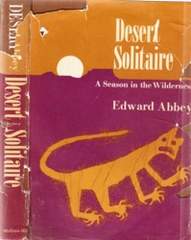 And Ed Abbey continued the course. His Desert Solitaire, published in 1968 is a classic. After writing him a fan letter telling him how much I enjoyed his book, he wrote back inviting me to ruminate over a beer—and we did at Lee’s Ferry, an ideal locale for the beginning of yet another classic—his beginning thoughts of The Monkey Wrench Gang.
And Ed Abbey continued the course. His Desert Solitaire, published in 1968 is a classic. After writing him a fan letter telling him how much I enjoyed his book, he wrote back inviting me to ruminate over a beer—and we did at Lee’s Ferry, an ideal locale for the beginning of yet another classic—his beginning thoughts of The Monkey Wrench Gang.
In 1963, the gates at Glen Canyon dam closed. The water quickly rose behind the dam and began its horrendous act of destruction. Anguish upon anguish! This was the most terrifying and destructive event in all of Utah’s environmental history. To destroy such beautiful canyons was unconscionable.
Each day the reservoir rose higher. Beautiful side canyons and grottos, thousands of ancient Indian ruins and writings, Music Temple, Hidden Passage, Cathedral-in-the-Desert, and Gregory Natural Bridge all became buried. It was a horrid nightmare—the way they took Glen Canyon from us. As the reservoir waters rose I pledged myself never to stop fighting to take down the dam and to allow the river to flow free again. When not exploring, I spent time advocating for civil right causes and opposing the war in Vietnam.
In 1963, Martin Luther King, Jr. delivered his famous, “I have a dream” speech at the foot of the Lincoln Memorial in Washington, D.C. More than 200,000 Americans marched to demonstrate civil rights support. I wish that I could have been there too. His work helped persuade Congress to enact the Civil Rights Act of 1964, which prohibited discrimination in employment and the Civil Rights Act of 1968, which prohibited discrimination in housing and real estate.
 Folk singers Joan Baez, Judy Collins, Woody Guthrie and Pete Seeger had an enormous influence on modern folk music and many of us.. Their “protest songs” are among my favorites: “Where Have All the Flowers Gone?” “We Shall Overcome,” and “Blowin’ in The Wind.” Bob Dylan’s songs became symbolic of the civil rights movement and hippie culture. Native Americans had civil rights problems too. The National Congress of American Indians met in Chicago and declared the nation’s “termination policy” the greatest threat to Indian survival since the 1800s military actions. Utah’s Senator Arthur Watkins had been a leader of that 1953 legislation. In New Mexico, the Indian people finally gained the right to vote in state elections. These rights had yet to be given to Utah’s Indians.
Folk singers Joan Baez, Judy Collins, Woody Guthrie and Pete Seeger had an enormous influence on modern folk music and many of us.. Their “protest songs” are among my favorites: “Where Have All the Flowers Gone?” “We Shall Overcome,” and “Blowin’ in The Wind.” Bob Dylan’s songs became symbolic of the civil rights movement and hippie culture. Native Americans had civil rights problems too. The National Congress of American Indians met in Chicago and declared the nation’s “termination policy” the greatest threat to Indian survival since the 1800s military actions. Utah’s Senator Arthur Watkins had been a leader of that 1953 legislation. In New Mexico, the Indian people finally gained the right to vote in state elections. These rights had yet to be given to Utah’s Indians.
Many of us got caught up in supporting civil right causes because it was the right thing to do. The spirit of the movement took the cause of racial justice and equality to heart, and often to the streets. “Keep-on-walkin'” and “keep-on-talkin'” became the mantras of the day. Civil rights demonstrations increased despite many arrests, and Martin Luther King, Jr. led marches in Selma, Alabama and Chicago. He well deserved his 1964 Nobel Peace Prize for his work for racial equality. Under his leadership civil disobedience and non-violent tactics, like the Washington March in 1963, brought about the Civil Rights Acts of the Sixties.
The women’s liberation movement began in earnest. Mama surely was “leaving home” now. Congress had already voted to guarantee women equal pay for equal work. And feminist Betty Friedan published The Feminine Mystique, which argued that women suffered from discrimination and the illusion of self-fulfillment through their husbands. This led to the formation of the National Organization for Women (NOW), led by Betty herself.
Fateful news spread across America marking the horrific assassination of our President John F. Kennedy on November 22, 1963 in a motorcade through Dallas, Texas. As the years proceeded, the military step-up in Vietnam grew as Red China supplied arms to the Vietcong. In a short time large areas had fallen under Viet Cong control. After North Vietnam allegedly attacked U.S. naval destroyers in the Gulf of Tonkin, Congress passed a Gulf of Tonkin Resolution that authorized President Johnson to “take all necessary measures” to repel other such attacks. The Marines landed and a full-scale offensive began in June 1965.
In the election of 1964, President Johnson was elected president of the United States in a landslide victory
in his own right. Goldwater won only six states. Though I found myself increasingly supporting a more progressive agenda, I retained my past political roots and voted the Republican line. Johnson pushed through extensive liberal legislation to build the “Great Society,” including the Medicare program and the Voting Rights Act. He pushed his “War on Poverty.” And in 1964, Congress finally passed the Wilderness Act. The long years of labor paid off. President Johnson signed the legislation on Sept 3. The definition of a wilderness was defined as: “A wilderness is hereby recognized as an area where the earth and its community of life are untrammeled by man, where man himself is a visitor who does not remain.”
Martin Luther King, Jr. was assassinated in April 1968 in Memphis motel room. Race riots in scores of cities followed. In the 1968 elections, Nixon beat Vice-president Hubert Humphrey by the narrowest margin after pledging withdrawal from Vietnam if elected. Senator Robert F. Kennedy who served as the U.S. attorney general under his brother’s presidency also ran for president. He became a popular leader of the liberal wing of the Democratic Party. I had a great admiration and respect for him. He was assassinated in June 1968, on the evening of his victory in the California primary.
At the time, I was taking a boating trip in the Grand Canyon, and after a hard day’s work. My guests were tucked away for the night and all was quiet, I had a desire to check the news. And through the radio earplug, I heard the horrid news that Kennedy had just been killed. I could not sleep that night.
At decade’s end, did America evolve as a better nation? Were the Sixties the best of times or the worst of times? The questions still rage. For better or worse, this dynamic, controversial, and exciting time has indeed become a part of our history. It was one crammed with expressions of peace and war and love and despair. The Sixties clearly succeeded in changing the face of American society. A Cultural Revolution had indeed taken place.
Click Here to Read Ken Sleight Remembers, Part 3: The Early 50s, War and the Longing for Red Rocks.
Click Here to Read Ken Sleight Remembers, Part 2: THE 1940’S: THE SHAPING OF A LIFE
Click Here to Read Ken Sleight Remembers: Part 1: The Adventure of New Beginnings…1930s.
To read the PDF version of this article, click here.
To comment, scroll to the bottom of the page.
Don’t forget the Zephyr ads! All links are hot!


